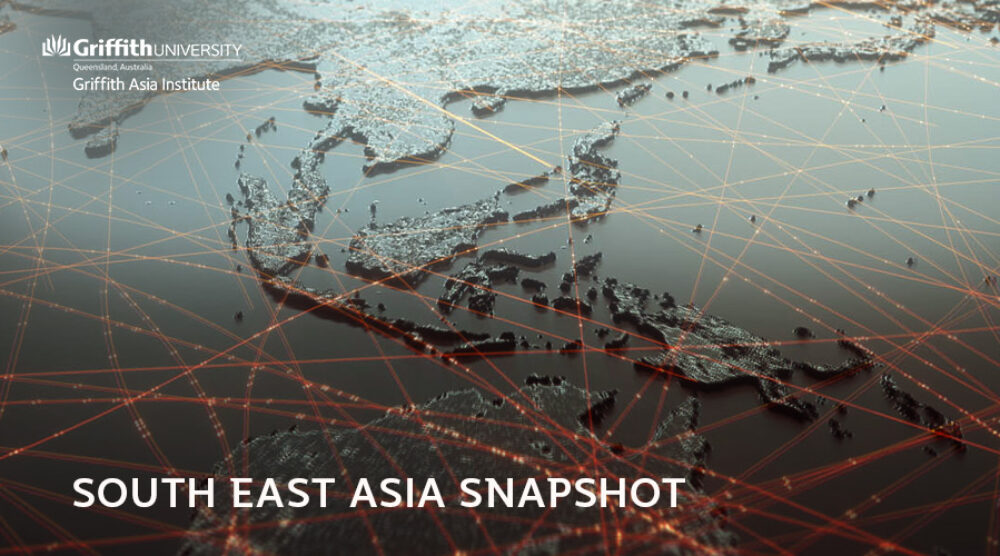Four ASEAN Foreign Ministers on working visit to China
Four ASEAN Foreign Ministers from Indonesia, the Philippines, Thailand, and Myanmar paid consecutive visits to China and met with the Chinese State Councilor and Foreign Minister, Wang Yi, from 31 March to 3 April to strengthen their relations, discuss regional issues, and exchange views on ASEAN–China relations.
Each meeting was held bilaterally, starting with Wang Yi and the Indonesian Foreign Minister, Retno Marsudi, on 31 March. The two ministers exchanged views on strengthening the China–ASEAN comprehensive strategic partnership with a focus on deepening trust in the Belt and Road Initiative (BRI) and the ASEAN Outlook on the Indo-Pacific. As one of Indonesia’s largest trading partners, China sought to support Indonesia as the rotating chair of the G20 Summit and suggested Indonesia focus on macroeconomic policy and promoting equality in the G20.
The Chinese Foreign Minister also met the military-appointed Myanmar Foreign Minister, Wunna Maung Lwin, on 1 April. In the meeting, Wang Yi demonstrated China’s intention to forge continuous cooperation with Myanmar in infrastructure, energy, health, and economy. U Wunna Maung Lwin expressed concerns regarding the internal conflict in Myanmar but China was assured its willingness to cooperate with Myanmar and urged other countries to work with the Tatmadaw to implement the five-point consensus based on the principle of non-interference.
During Wang Yi’s bilateral talk with the Thai Deputy Prime Minister and Foreign Minister, Don Pramudwinai, on 2 April, China expressed its readiness to work with Thailand on the BRI guidelines and connect its railway project from Laos to Thailand and Malaysia. Furthermore, Beijing also revealed its ambition to cooperate with Bangkok in the energy, digital economy, infrastructure, technology, trade, and health sectors. Globally, both offered support for peace talks, humanitarian assistance, and the prevention of escalation between Russia and Ukraine.
In the meeting with the Philippines’ Foreign Secretary Teodoro Locsin on 3 April, Wang Yi said that the Philippines was China’s top priority. He encouraged the removal of political turbulence facing the two countries, poising China as a good neighbour, stating that China was ready to work with the Philippines on the South China Sea issue. China also offered infrastructure investment and provide health assistance to the Philippines to combat the COVID-19 pandemic.
The visit of the four ASEAN ministers ran smoothly, a fact that some have attributed to the US–ASEAN summit postponement. Some analysts argue that this demonstrates that the region is more willing to cooperate with China compared to the US. However, some disagree, saying that the visit was only supporting regional cooperation between China and ASEAN, not taking sides between China and the US.
As far as the Southeast Asian region is concerned, China has certainly strengthened its opportunity to reach out to ASEAN and prove itself as a partner to the region in the long run. The visit has not only revealed China’s ambition to foster and promote the Belt and Road Initiative, but it also shows the significance of the region in achieving China’s geopolitical interests.
Backlash from Malaysia’s request for Malay to be ASEAN’s second language
In late March, Malaysian Prime Minister Datuk Seri Ismail Sabri Yaakob made a proposal to ASEAN to use Malay as the second language of ASEAN after English. However, the proposal did not receive the positive response the Prime Minister expected
The proposal was made because the language is used in many ASEAN member states and also in a bid to strengthen Malaysia’s language on the international stage. Indonesian Minister of Education, Culture, Research, and Technology Nadiem Makarim completely rejected it. Indonesia also released a statement, on 4 April, suggesting Bahasa Indonesia to be the second language instead due to its historical and linguistic connection with the other ASEAN member states. Bahasa Indonesia is being used in 47 countries in the world and taught in more than 400 education institutions.
Some have suggested that Malaysia’s proposal should now undergo reviews. Others believe that this policy debate actually illustrates different aspirations within ASEAN. While Malaysia may insert more political influence in ASEAN if Malay is accepted to the second official language of ASEAN, it is still a long way from seeing this proposal become reality.
Cooperation deal between China and Cambodia’s army signed
In a video call on 31 March, the Cambodia and China signed a Memorandum of Understanding (MoU) to strengthen their security cooperation in light of the China-US rivalry The details of the MoU, however, were not disclosed to the public.
This MoU was signed by the Chinese Commander of the People’s Liberation Army Ground Force, General Liu Zhenli, and the Cambodian Deputy Commander-in-Chief of the Royal Cambodian Army, General Hun Manet, who has been recently endorsed as the future candidate of premiership by the Cambodian People’s Party.
The spokespersons of both the Chinese Ministry of Defense and the Royal Cambodian Army stated that the cooperation signified good relations of both countries. Both sides expressed commitment in strengthening communication, cooperation, joint military training, and military exercises. However, the spokesperson from the US Embassy in Cambodia urged the Cambodian government to be transparent regarding Chinese military presence in the Kingdom.
This MoU has further entrenched Cambodia as China’s ‘iron-clad friend‘ and may add to the West’s anxiety about the growing Chinese influence in Cambodia. With this MoU in place, it is less likely that Cambodia will tilt away from China anytime in the near future.
Sovinda Po is a Research Assistant at the Griffith Asia Institute.








